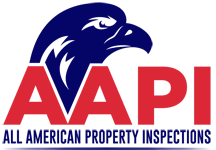As you can imagine, there are many different components that make up a house. From the foundation that was laid to the walls that were erected to the roof that covers everything in between like the electricity, doors, windows, and plumbing.
Below you will find a list of everything that, by law, a Home Inspector is legally obligated to check and report on.
Besides some of these components, I explain what exactly I’m looking for and why.
- Structural components including foundation and framing of the home – The first thing I check upon arrival of the home is the exterior features and structural components. As I go around the house I am looking for everything from possible drainage issues where water can flow back toward the house or areas of bad drainage, or water issues that may arise from rain coming off the roof. I am also looking for signs of wood-destroying organisms; termites, mold, and wood decay.
- Exterior features including siding, soffit, porches, balconies, walkways, railings and driveways – If the exterior of the home is brick or stucco I am looking for any evidence of damage, cracking or settling. If the exterior is wood or siding of another kind, I am looking to make sure that it is not damaged, or decayed, and that the exterior of the home is properly caulked and sealed. I also inspect every outlet and plumbing fixture as well as the air conditioning and parts of systems that are located on the building exterior.
- Roof system including shingles, flashing and skylights -The roof is inspected in different ways depending on the age and type of roofing. Shingle roofs are the only kind that the home inspection certification will allow us to walk on. Tile and metal roofs can be damaged from being walked on so if you have a roof that is not shingle, make sure only a roofer walks on it to keep it from being damaged. On roofs that I am not allowed to walk on, I inspect with high powered binoculars or by putting my ladder on the roof edge and inspect the roof from the top of the ladder. Shingles on lower roofs should not have a ladder put on them to get to the upper roof due to the damage the ladder causes on the shingles of the lower roof. The roof is inspected from the top side and also from the attic.
- Electrical system including service panels, breakers, and fuses
- Plumbing systems including pipes, drains, water heating equipment, and sump pumps
- The heating system including equipment and venting
- Cooling system including energy sources and distribution equipment
- Interior features including walls, ceilings, floors, windows, doors, stairs, and railings – The interior of the home has an extensive amount of things and areas inspected. Every outlet and light switch is inspected, every plumbing fixture, every appliance, every door, window, and the built-in drawer is opened and closed. Close attention is paid on the baseboards and around windows for signs of water intrusion and termite activity. My flashlight uses a white light the makes any water staining very visible. When I am inspecting the interior, I am also looking for any signs of previous repairs that may be hiding an issue. While on the interior, I take off the electrical panel to make sure the wiring is right and that there is copper or aluminum wiring. I also take the cover off of the air handler or furnace to look at the inside of the unit and make sure that the cooling coils are clean and free of mold and blockage.
- Insulation and ventilation including those in the attic and other unfinished spaces – While in the attic, I am looking for any signs of roof damage or water staining on the roof decking but while I am in the attic I am also looking at the insulation, plumbing, electrical and air conditioning components as well. If there are openings in the exterior of the home to the attic, it is not uncommon to find field mice or other rodents have found their way into the attic.
- Fireplaces including chimneys and vents
Components NOT included in a Home Inspection
- Termite and Pest Control Report
- Well Systems
- Mold Inspection – Even though a specific Mold Inspection is not included you can find out what I look for as far as mold goes in this article, “Looking for Mold during the Home Inspection”
- Sprinkler systems – These systems continually require repairs and adjustments. I used to inspect sprinkler systems but the lawn maintenance people would run the sprinkler over after I inspected them and I would get a call asking me why I said that the sprinkler system was fine when sprinkler heads were damaged. I will turn a system on to make sure it comes on but while I am inspecting the exterior of the home, I am looking for areas and signs that the sprinkler system needs repairs or adjustments.
- Fire and smoke detection and suppression systems – If I check the smoke detectors and they all work fine, it might be a month or two before the client takes possession of the home and the batteries may have died since they were inspected. I put in every one of my reports that the smoke alarms should be tested when the property is taken possession of and then put on a maintenance schedule.
- Alarm systems are also not inspected because when you put the system on in your name, the company will come out and service the system and if you go with a different company, then there was no sense in inspecting the system that is getting replaced.


0 Comments